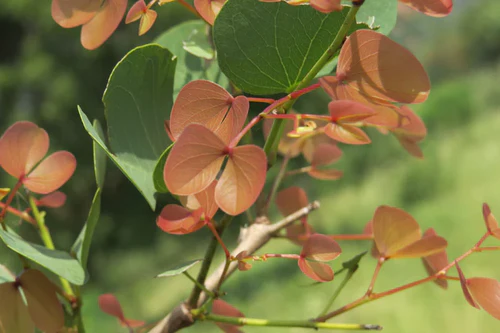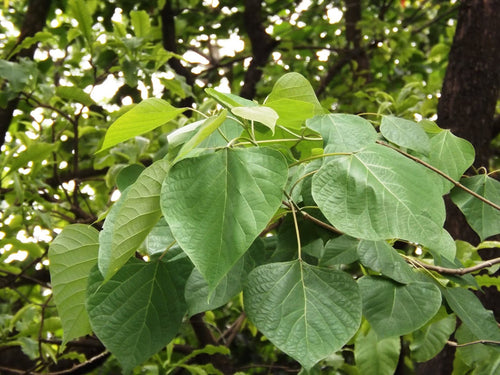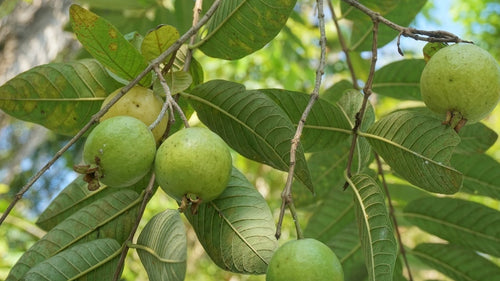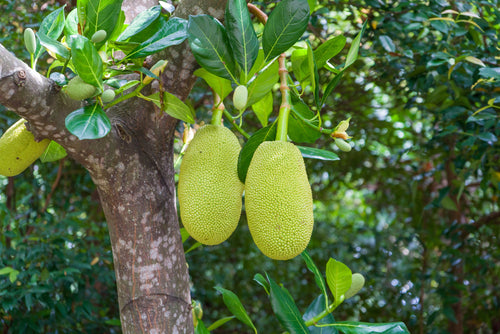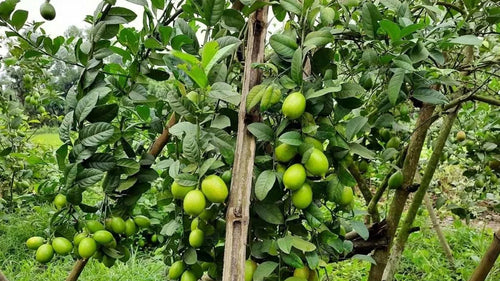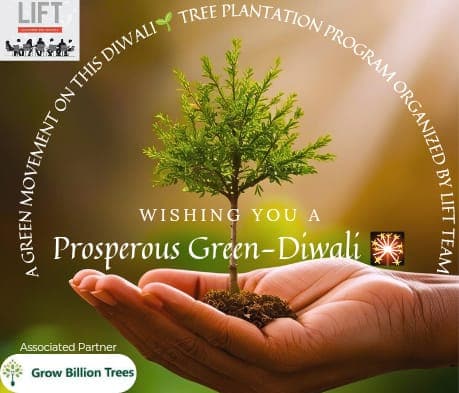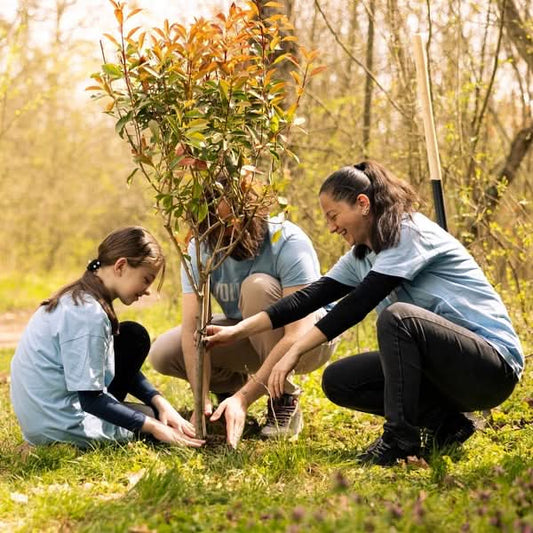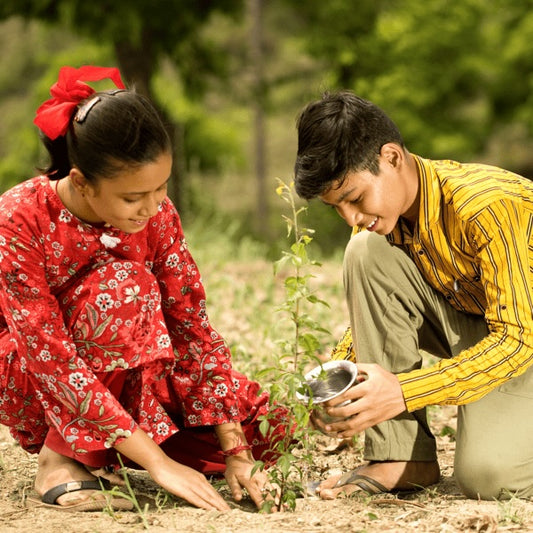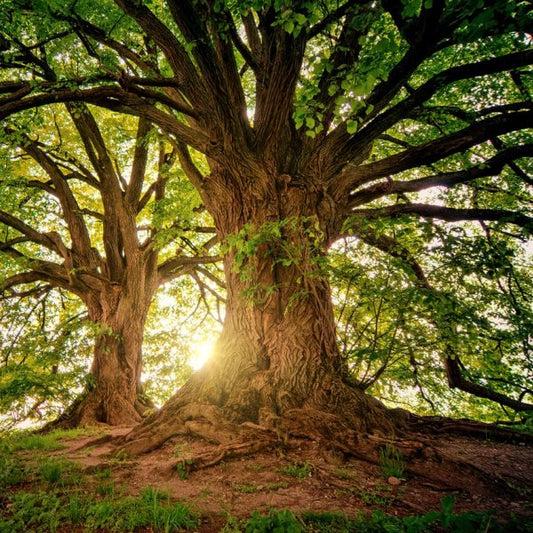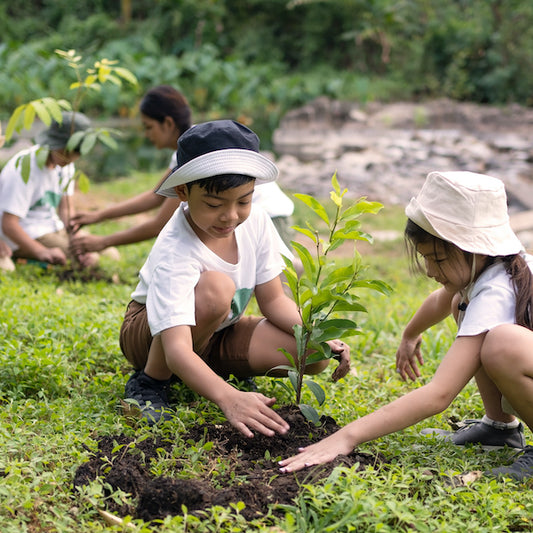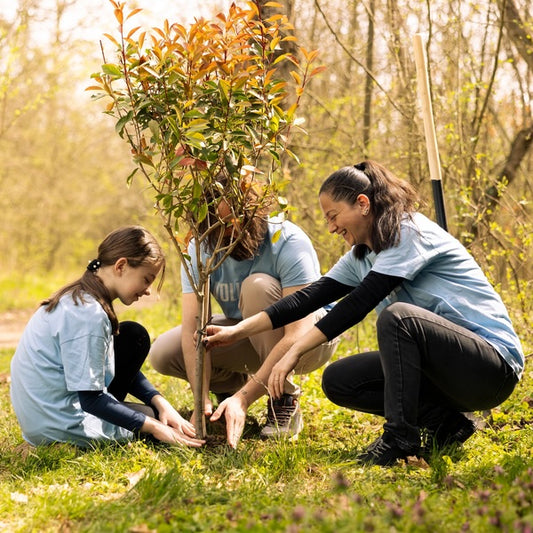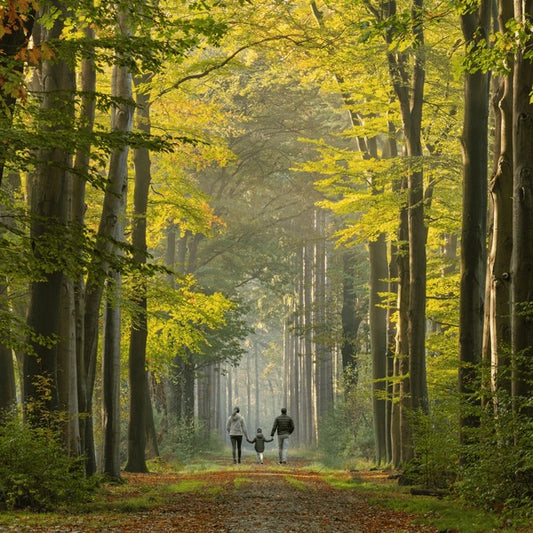Microforests by Grow Billion Trees: Small Spaces, Big Impact
Grow Billion Trees has developed a vibrant Micro Forest as part of its commitment to restoring green spaces and nurturing environmental resilience. Th Read more
Project Update 1
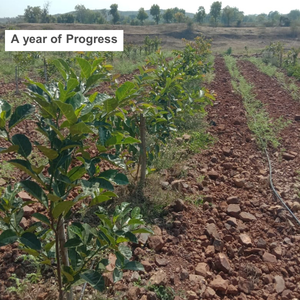
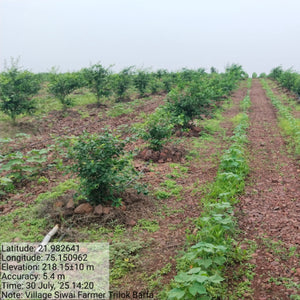
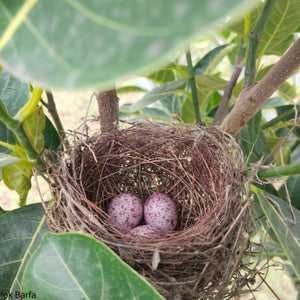
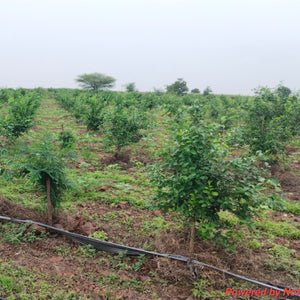
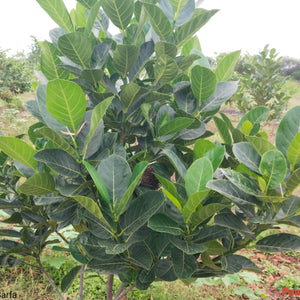
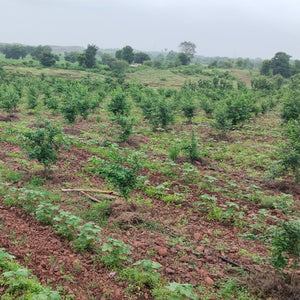
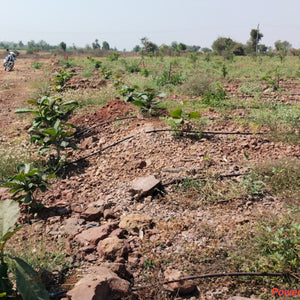
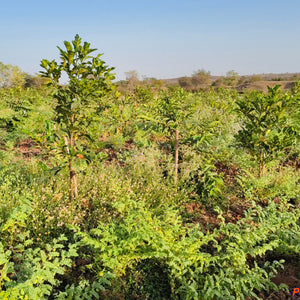
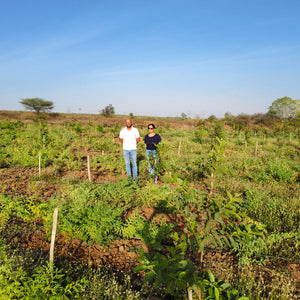
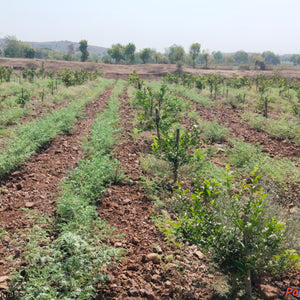
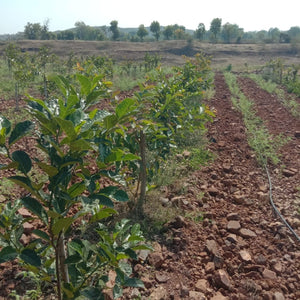
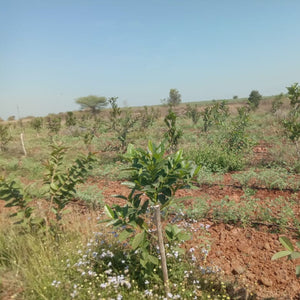
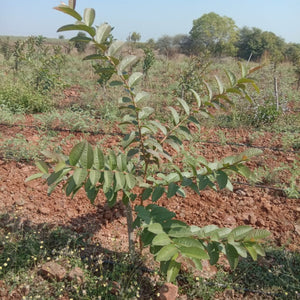
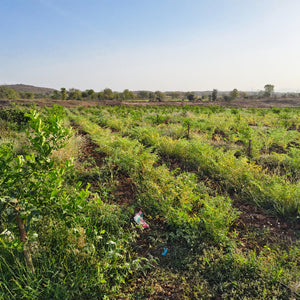
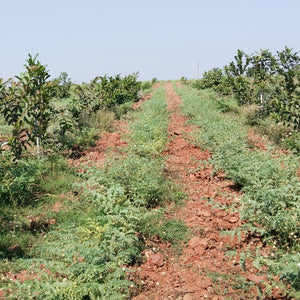
Digital Forest
Forest with 3,735 Trees planned
Want to plant your tree now?
Plant a Tree @ 299Microforests by Grow Billion Trees: Small Spaces, Big Impact
Grow Billion Trees has developed a vibrant Micro Forest as part of its commitment to restoring green spaces and nurturing environmental resilience. This dense, fast-growing plantation serves as a natural purifier, improving air quality by absorbing pollutants and releasing life-enriching oxygen. Designed to mimic native forest ecosystems, it enhances biodiversity, drawing in bees, butterflies, and birds while offering fruits and medicinal plants that benefit local communities’ health and livelihoods.
Beyond ecological restoration, the micro forest contributes to groundwater recharge, prevents soil erosion, and acts as a natural cooling zone, a welcome green escape for people to relax and reconnect with nature. The initiative also champions sustainable living by promoting composting of kitchen waste and eco-friendly practices. Together, these efforts foster a self-sustaining, environmentally aware community and a greener, more climate-resilient future.
Project Planning & Execution
No of Trees: 3735
Plantation Location: Village Siwai, Rajpur Tehsil, District Barwani, Madhya Pradesh 451447
Plantation Duration: 1st July 2024 to 5th August 2024
Name of Species: Teak, Guava, Custard Apple, Drumstick, Jackfruit, Lemon, Chirol, Karanj, Gudhal, Mango, Bamboo, Badam
Species Selection & Its Benefits:
The Micro Forest initiative features a thoughtfully selected mix of native and climate-resilient species that restore ecosystems and support community well-being. Trees like Teak, Guava, Custard Apple, Drumstick, Jackfruit, and Lemon enhance nutrition, improve air quality, and require minimal care. Guava and Custard Apple offer vitamin-rich fruits, while Drumstick (Moringa) combats malnutrition. Teak and Jackfruit aid in carbon storage and food security, and Lemon adds medicinal value.
Supporting species such as Chirol and Karanj thrive in dry soils. Chirol helps reclaim degraded land, while Karanj enriches the soil and offers biofuel potential. Gudhal brings beauty and health benefits, Mango provides shade and seasonal fruit, and Bamboo controls erosion and supports livelihoods through its versatile uses. Badam (Almond) adds nutritional and economic value.
Together, these species create a fast-growing, self-sustaining green space that boosts biodiversity, supports local health, and strengthens environmental resilience, embodying a balanced approach to ecological restoration and community empowerment.
Planting Methodology and Its Advantages
Micro Forest: A Micro Forest is a small, dense, and fast-growing plantation of native trees, designed to mimic a natural forest ecosystem in limited spaces. Inspired by the Miyawaki method, it uses a high-density mix of species to restore biodiversity, improve air and soil quality, and create a self-sustaining green space ideal for urban and peri-urban areas.
Advantages of Micro Forest
-
Rapid Greening and Carbon Capture: The high-density planting model promotes 10x faster growth than conventional methods, leading to quick canopy cover and efficient carbon sequestration, crucial for urban areas battling air pollution and heat islands.
-
Urban Biodiversity Boost: By incorporating a diverse palette of native trees and shrubs, the micro forest creates habitats for pollinators, birds, and insects, helping revive local ecosystems even in concrete-heavy environments.
-
Improved Air and Soil Quality: Deep-rooted trees absorb pollutants, while mulching and organic inputs enhance soil structure and fertility, restoring degraded soils and purifying the air.
-
Water Conservation and Groundwater Recharge: Thick mulching layers and dense root networks improve rainwater absorption and prevent runoff, contributing to localized groundwater recharge and drought resilience.
-
Climate Mitigation and Heat Reduction: Microforests serve as natural coolers in urban heat zones, reducing ambient temperatures and improving microclimates through shade and evapotranspiration.
-
Low Maintenance and Long-Term Sustainability: After the initial 2–3 years of care, the forest becomes self-sustaining, requiring little to no human intervention, making it a cost-effective solution for long-term green cover.
-
Community Involvement and Environmental Education: Engaging schools, offices, and residents in plantation and care fosters environmental stewardship and builds a collective sense of ownership and responsibility.
-
Reviving Native Flora and Cultural Value: Planting indigenous species like Mango, Neem, and Bamboo not only restores regional biodiversity but also reconnects communities with traditional ecological knowledge and heritage.
Conclusion Elements
Impact
Indirect Impact
Community Impact
-
Improved Rural Well-being: The Micro Forest creates a green sanctuary within the village, offering clean air, shaded areas, and a peaceful environment that promotes physical and mental well-being for all age groups.
-
Community Participation and Stewardship: Villagers, including children and elders, actively take part in planting and caring for the forest, fostering a collective sense of pride, ownership, and responsibility toward nature.
-
Learning Hub for Sustainable Practices: The forest becomes a hands-on learning space where villagers can understand native species, composting, and organic care, spreading practical knowledge across generations.
-
Strengthened Social Bonds: Shared involvement in maintaining the Micro Forest encourages unity, cooperation, and stronger community relationships, while also providing a space for social gatherings and recreation.
-
Revival of Traditional Wisdom: The inclusion of trees like Neem, Mango, and Gudhal reconnects the community with ancestral knowledge around herbal medicine, seasonal cycles, and traditional ecological practices.
-
Shift Toward Greener Living: Exposure to composting, waste management, and natural care methods gradually encourages villagers to adopt sustainable habits at home and in farming practices.
Environmental Impact
-
Efficient Carbon Sequestration: The dense plantation of native species helps absorb carbon dioxide faster, contributing to the fight against climate change and making rural landscapes more climate-resilient.
-
Cleaner Air and Healthier Soil: Trees naturally filter dust and pollutants while enriching the soil with organic matter and root activity, restoring fertility and improving crop productivity nearby.
-
Water Retention and Groundwater Recharge: The forest floor retains rainwater through mulching and dense root systems, reducing runoff, enhancing percolation, and supporting local water tables.
-
Soil Stability and Erosion Control: Deep-rooted species help anchor the soil, protecting village lands from erosion caused by wind or monsoon rains, especially important on sloped or degraded plots.
-
Biodiversity Habitat: The variety of trees and undergrowth attracts pollinators, birds, and beneficial insects, creating a self-sustaining mini ecosystem that supports agricultural health.
-
Microclimate Improvement: The growing forest moderates local temperatures, increases humidity, and offers protection from harsh sun, making the surrounding area cooler and more comfortable for people, livestock, and crops.
Achievements
SDG Goals Achieved through Micro Forest
-
SDG 1: No Poverty – The Micro Forest creates rural employment through nursery activities, plantation work, and forest maintenance, offering sustainable livelihood options for local communities.
-
SDG 2: Zero Hunger – By including fruit-bearing and multi-purpose trees, the initiative provides access to nutritious, homegrown food sources, helping combat hidden hunger and improving dietary diversity.
-
SDG 3: Good Health and Well-Being – The forest enhances air quality, reduces dust and pollutants, and provides medicinal plants, contributing to better respiratory health and encouraging natural healing practices.
-
SDG 5: Gender Equality – Women are actively involved in planting, caring, and learning about forest management, promoting gender inclusion and empowering them with skills and income-generating opportunities.
-
SDG 6: Clean Water and Sanitation – Dense tree cover aids groundwater recharge and reduces surface runoff, improving water availability and promoting better water conservation practices in the village.
-
SDG 8: Decent Work and Economic Growth – The initiative fosters green rural jobs and supports micro-enterprises in seed collection, nursery development, and eco-product creation.
-
SDG 10: Reduced Inequalities – By focusing on marginalized and smallholder communities, the Micro Forest ensures equitable access to green resources, knowledge, and participation.
-
SDG 11: Sustainable Cities and Communities – Though implemented in a village, the Micro Forest introduces sustainable land use planning and enhances the quality of life through green infrastructure.
-
SDG 12: Responsible Consumption and Production – The initiative promotes composting, organic care, and resource-efficient practices, reducing reliance on chemicals and improving ecological awareness.
-
SDG 13: Climate Action – Trees sequester carbon, regulate local temperatures, and reduce the impact of extreme weather events, making the village landscape more climate-resilient.
-
SDG 15: Life on Land – By restoring degraded land and reviving native tree species, the Micro Forest enriches biodiversity, supports pollinators, and rejuvenates rural ecosystems.
-
SDG 17: Partnerships for the Goals – The success of the Micro Forest relies on collaboration between Grow Billion Trees, villagers, NGOs, and local stakeholders, demonstrating the power of community-driven environmental action.
ESG Achieved through Micro Forest
-
Environmental Impact: The Micro Forest initiative revitalizes rural landscapes by densely planting native and climate-resilient species that restore soil, improve air quality, and enhance biodiversity. These fast-growing forests help sequester carbon, reduce erosion, and recharge groundwater, playing a vital role in combating climate change. The use of organic inputs, mulching, and natural pest control promotes regenerative practices that protect the environment and ensure long-term sustainability.
-
Social Impact: The initiative strengthens rural communities by providing access to cleaner air, shade, and locally grown fruits and medicinal plants. It promotes health and well-being while fostering environmental awareness and local stewardship. By engaging villagers, especially women and youth, in planting and maintenance, the Micro Forest builds skills, encourages ownership, and strengthens community bonds, contributing to a more resilient and cohesive society.
-
Governance Impact: Grow Billion Trees showcases effective sustainability governance by ensuring inclusive participation, transparency, and community-driven execution. The initiative involves local leaders, farmers, and volunteers at every stage, aligning decision-making with grassroots needs. It emphasizes ethical land use, responsible resource management, and long-term monitoring, reinforcing accountability and aligning with broader environmental and social governance standards.
Building Communities
One of the most impactful outcomes of the Micro Forest initiative has been its ability to bring rural communities together around a shared purpose reviving degraded land and creating lush green spaces that benefit both people and the planet. By involving villagers, youth, farmers, and local institutions, the initiative became a collective journey of restoration, resilience, and pride in sustainable action.
-
Empowering Communities: Through active participation in planting, mulching, and forest care, community members became guardians of their environment. Women especially gained hands-on experience in organic land management and native species care, strengthening their role as environmental stewards and decision-makers in their households and beyond.
-
Fostering Partnerships: The initiative built strong bridges between Grow Billion Trees, village panchayats, local NGOs, and residents. This collaborative model demonstrated how united efforts grounded in trust and local wisdom can regenerate ecosystems while uplifting communities.
-
Creating a Ripple Effect: As the forest began to thrive, cooling the air, attracting birds and bees, and offering shade and fruit, nearby villages took notice. Inspired by the success, neighboring communities expressed interest in replicating the model, leading to a growing movement of micro forest creation across rural landscapes.
The Micro Forest initiative shows that environmental transformation starts with connected communities. It's not just about planting trees it's about growing unity, resilience, and a greener, more hopeful future for villages across India.
Commitment by Grow Billion Trees
Trees for Corporates
Trending
Most Popular
1. Native Trees Plantation
Ah, the unsung heroes of the green world—native trees. While exotic plants might look Insta-worthy, it's the local legends like Neem, Mango, and Banyan that do the real heavy lifting. Grow Billion Trees swears by native species in their Micro Forest model, and for good reason. These trees are born and raised in the same soil we walk on—they know how to handle the monsoons, beat the heat, and make peace with the pests. They're like your grandma's home remedies, but for the environment.
Native trees don’t just survive; they thrive—supporting biodiversity, restoring soil health, and attracting friendly pollinators like bees, birds, and butterflies. And guess what? They're much lower maintenance than their fancy, foreign cousins. Less drama, more dharma.
Native trees don’t just survive; they thrive—supporting biodiversity, restoring soil health, and attracting friendly pollinators like bees, birds, and butterflies. And guess what? They're much lower maintenance than their fancy, foreign cousins. Less drama, more dharma.
So next time you're thinking of planting a tree, think local. It's eco-friendly, budget-friendly, and let's be honest—nothing beats the nostalgia of a Mango tree you climbed as a kid. With Grow Billion Trees, native trees are leading the charge toward a climate-resilient and culturally rooted green revolution. Plant local, grow global!
So next time you're thinking of planting a tree, think local. It's eco-friendly, budget-friendly, and let's be honest—nothing beats the nostalgia of a Mango tree you climbed as a kid. With Grow Billion Trees, native trees are leading the charge toward a climate-resilient and culturally rooted green revolution. Plant local, grow global!
2. Miyawaki Forest Method
If tree plantation had a superhero origin story, the Miyawaki Method would be the genius scientist behind it all. Developed by Japanese botanist Akira Miyawaki, this method grows trees 10 times faster and 30 times denser than traditional plantations. Sounds like tree magic, right? Well, it kind of is.
Grow Billion Trees uses this method to create Micro Forests in villages, transforming barren patches into lush green jungles in record time. It’s like fast food—but for forests, and way healthier. By planting 3–5 saplings per square meter using native species, these forests grow so fast, even your lawn grass might get jealous.
Grow Billion Trees uses this method to create Micro Forests in villages, transforming barren patches into lush green jungles in record time. It’s like fast food—but for forests, and way healthier. By planting 3–5 saplings per square meter using native species, these forests grow so fast, even your lawn grass might get jealous.
But speed isn't the only charm. These forests restore biodiversity, fight climate change, and create cool, shaded spaces where birds chirp, bees buzz, and villagers chill. And no, they don't need pampering after year three—these forests become self-sustaining faster than you can say "Photosynthesis."
But speed isn't the only charm. These forests restore biodiversity, fight climate change, and create cool, shaded spaces where birds chirp, bees buzz, and villagers chill. And no, they don't need pampering after year three—these forests become self-sustaining faster than you can say "Photosynthesis."
So if you're looking to speed-plant your way out of climate guilt, Miyawaki’s your method. And Grow Billion Trees? They’re your trusted forest engineers.
So if you're looking to speed-plant your way out of climate guilt, Miyawaki’s your method. And Grow Billion Trees? They’re your trusted forest engineers.
3. Climate-Resilient Planting
When life gives you climate change, plant smarter trees. That’s the mantra behind climate-resilient planting, and Grow Billion Trees is preaching it like it’s gospel.
We're talking about hardy, no-nonsense trees that can take on droughts, floods, heatwaves, and the occasional goat attack without losing their cool. Think Drumstick, Jackfruit, and Bamboo—trees that don’t just survive; they adapt and thrive.
We're talking about hardy, no-nonsense trees that can take on droughts, floods, heatwaves, and the occasional goat attack without losing their cool. Think Drumstick, Jackfruit, and Bamboo—trees that don’t just survive; they adapt and thrive.
In the Micro Forest model, climate-resilient species are like the VIP guests. They’re first in line, and they bring long-term benefits—better soil, food security, carbon storage, and even some shade for your afternoon nap. And let’s be honest—any tree that helps us keep our cool during rising temperatures deserves a standing ovation.
In the Micro Forest model, climate-resilient species are like the VIP guests. They’re first in line, and they bring long-term benefits—better soil, food security, carbon storage, and even some shade for your afternoon nap. And let’s be honest—any tree that helps us keep our cool during rising temperatures deserves a standing ovation.
These trees don’t just fix the environment; they future-proof it. With every sapling planted, Grow Billion Trees helps rural communities adapt to a warming world, all while making it greener, healthier, and—let’s admit—Instagrammably beautiful.
These trees don’t just fix the environment; they future-proof it. With every sapling planted, Grow Billion Trees helps rural communities adapt to a warming world, all while making it greener, healthier, and—let’s admit—Instagrammably beautiful.
So plant now, worry less later. Climate-resilient planting is like environmental insurance—minus the premium.
So plant now, worry less later. Climate-resilient planting is like environmental insurance—minus the premium.
4. Rural Reforestation
Who says forests only belong to national parks and fairy tales? Rural reforestation is bringing dense green cover back where it all began—in the heart of our villages.
Grow Billion Trees is on a mission to turn dried-up fields and neglected plots into thriving micro jungles. This isn’t just a cosmetic makeover; it’s a full-blown ecosystem revival. Trees = shade, fruits, fodder, firewood, and future.
Grow Billion Trees is on a mission to turn dried-up fields and neglected plots into thriving micro jungles. This isn’t just a cosmetic makeover; it’s a full-blown ecosystem revival. Trees = shade, fruits, fodder, firewood, and future.
By empowering rural communities to plant and maintain their own Micro Forests, this initiative is more than just green—it’s gold. It supports local livelihoods, boosts soil fertility, and even brings back the lost chirps of birds you forgot existed.
By empowering rural communities to plant and maintain their own Micro Forests, this initiative is more than just green—it’s gold. It supports local livelihoods, boosts soil fertility, and even brings back the lost chirps of birds you forgot existed.
And the best part? It’s people-powered. Farmers, women’s groups, and local kids come together to dig, plant, and protect—because it’s not just about growing trees, it’s about growing ownership.
And the best part? It’s people-powered. Farmers, women’s groups, and local kids come together to dig, plant, and protect—because it’s not just about growing trees, it’s about growing ownership.
So here’s to rural reforestation
where every sapling is a step toward food security, clean air, and a greener tomorrow. Who knew forest revival could be this grassroots?
5. Community Tree Plantation
You know what they say—it takes a village to grow a forest. And nowhere is that truer than in community tree plantations, where spades, smiles, and shared dreams come together under a green canopy.
Grow Billion Trees has turned plantation drives into full-blown community festivals. Kids get muddy, women lead the charge, and elders bless the roots. It’s not just planting trees—it’s planting pride, participation, and purpose.
Grow Billion Trees has turned plantation drives into full-blown community festivals. Kids get muddy, women lead the charge, and elders bless the roots. It’s not just planting trees—it’s planting pride, participation, and purpose.
The Micro Forests planted this way don’t just belong to Grow Billion Trees—they belong to the people. That sense of ownership ensures better care, deeper engagement, and longer-lasting impact. Because when people plant their future, they protect it.
The Micro Forests planted this way don’t just belong to Grow Billion Trees—they belong to the people. That sense of ownership ensures better care, deeper engagement, and longer-lasting impact. Because when people plant their future, they protect it.
Plus, it’s a great excuse to leave your screen, bond with neighbors, and maybe even swap some stories under a newly planted Mango tree.
Plus, it’s a great excuse to leave your screen, bond with neighbors, and maybe even swap some stories under a newly planted Mango tree.
So next time you want to make a difference, grab a sapling and invite your community. With Grow Billion Trees, tree planting is no longer a chore—it’s a celebration.
So next time you want to make a difference, grab a sapling and invite your community. With Grow Billion Trees, tree planting is no longer a chore—it’s a celebration.
6. Sustainable Land Use
Gone are the days when ‘unused land’ was just a weed party. With sustainable land use, that patch of barren earth can be your next oxygen generator.
Grow Billion Trees is flipping the land use narrative with Micro Forests—small, dense, high-impact green zones that make every square foot count. Whether it’s the corner of a schoolyard, a patch beside a well, or the edge of a farm—if it’s land, it can be forest.
Grow Billion Trees is flipping the land use narrative with Micro Forests—small, dense, high-impact green zones that make every square foot count. Whether it’s the corner of a schoolyard, a patch beside a well, or the edge of a farm—if it’s land, it can be forest.
And don’t worry, there’s no bulldozer involved. This is low-input, high-return magic. Organic compost? Check. Mulching? Check. Biodiversity? Triple check.
And don’t worry, there’s no bulldozer involved. This is low-input, high-return magic. Organic compost? Check. Mulching? Check. Biodiversity? Triple check.
The goal? To make sure every piece of land gives back—to the people, to the pollinators, and to the planet. Because sustainable land use isn’t about just planting trees; it’s about planting purpose.
The goal? To make sure every piece of land gives back—to the people, to the pollinators, and to the planet. Because sustainable land use isn’t about just planting trees; it’s about planting purpose.
So the next time you see an empty plot, don’t just walk past it. Dream green. With Grow Billion Trees, every square meter has a second chance.
So the next time you see an empty plot, don’t just walk past it. Dream green. With Grow Billion Trees, every square meter has a second chance.
7. Eco Education in Villages
Let’s talk about the green classroom—the one without walls. Eco education in villages is at the heart of Grow Billion Trees’ Micro Forest mission, and trust us, it's way more fun than textbook science.
Picture this
Kids learning about pollination by watching bees. Women discovering composting through kitchen waste. Farmers swapping tips under the shade of a tree they planted. That’s learning by growing, literally.
These forests are living labs where everyone—from toddlers to teachers—gets hands-on experience in biodiversity, sustainability, and climate action. It’s education rooted in the soil.
These forests are living labs where everyone—from toddlers to teachers—gets hands-on experience in biodiversity, sustainability, and climate action. It’s education rooted in the soil.
And here’s the magic
once people learn how ecosystems work, they protect them better. Knowledge becomes action. Saplings become symbols of local pride.
So forget chalk and duster—Grow Billion Trees is teaching villages the ABCs of climate care through bark, branches, and biodiversity.
So forget chalk and duster—Grow Billion Trees is teaching villages the ABCs of climate care through bark, branches, and biodiversity.
8. Tree Plantation for Climate Action
If trees had a resume, climate warrior would be at the top. And Grow Billion Trees is handing out job offers—with a shovel.
Every Micro Forest planted is a tiny army fighting climate change. Trees pull CO₂ out of the air like champs, cool the surroundings, boost groundwater, and keep soil from washing away during tantrum-level monsoons.
Every Micro Forest planted is a tiny army fighting climate change. Trees pull CO₂ out of the air like champs, cool the surroundings, boost groundwater, and keep soil from washing away during tantrum-level monsoons.
But it’s not just about carbon credits. It’s about climate credibility—showing the world that rural communities aren’t just victims of climate change; they’re also part of the solution.
But it’s not just about carbon credits. It’s about climate credibility—showing the world that rural communities aren’t just victims of climate change; they’re also part of the solution.
Through science-backed plantation models and native species, Grow Billion Trees ensures that each tree is in the right place, playing the right role. No freeloaders here—every trunk is doing its bit.
Through science-backed plantation models and native species, Grow Billion Trees ensures that each tree is in the right place, playing the right role. No freeloaders here—every trunk is doing its bit.
So whether you're an NGO, a school, a company, or a farmer, planting trees is your climate mic drop. Let’s make the earth cooler, one sapling at a time. Literally.
So whether you're an NGO, a school, a company, or a farmer, planting trees is your climate mic drop. Let’s make the earth cooler, one sapling at a time. Literally.
FAQ
What is the Micro Forest initiative by Grow Billion Trees?
The Micro Forest initiative by Grow Billion Trees is a high-density, native tree plantation model designed to restore green cover in small spaces, especially in rural and semi-urban areas. Inspired by the Miyawaki method, it helps regenerate biodiversity, improve soil and air quality, and sequester carbon quickly. These self-sustaining forests grow faster, support pollinators, and provide food, shade, and medicinal benefits to the community. It's a scalable, eco-friendly solution for transforming unused or degraded land into thriving, climate-resilient ecosystems.
How does Grow Billion Trees select species for Micro Forests?
At Grow Billion Trees, we select native, climate-resilient, and multipurpose species that thrive in local soil and weather conditions. These trees include fruit-bearing, medicinal, and soil-enriching varieties like Neem, Mango, Drumstick, Guava, and Bamboo. Our goal is to ensure biodiversity, long-term growth, and community benefits such as nutrition, groundwater recharge, and habitat restoration. The focus is on low-maintenance trees that support both the ecosystem and livelihoods, ensuring every plantation is rooted in sustainability and local relevance.
Where does Grow Billion Trees implement its tree plantation projects?
Grow Billion Trees operates across India, implementing tree plantation and Micro Forest projects in rural villages, school campuses, urban spaces, and degraded lands. We work with communities, corporates, NGOs, and local governments to identify available land and customize plantation models that serve environmental and social goals. From agroforestry in farmlands to urban mini forests, our projects are designed to bring greenery, biodiversity, and sustainability to every corner of the country.
What are the benefits of planting native trees?
Native trees are best suited for local climates and ecosystems. They require less maintenance, support regional biodiversity, improve soil health, and are more resistant to pests and diseases. At Grow Billion Trees, we prioritize native species to ensure faster adaptation, ecological balance, and long-term sustainability. These trees also provide cultural, nutritional, and medicinal value, making them ideal for community-based plantation models like Micro Forests and Poshan Vatikas.
Can individuals or companies partner with Grow Billion Trees?
Yes, Grow Billion Trees welcomes partnerships with individuals, schools, companies, and institutions. Whether you want to plant trees for CSR, birthdays, anniversaries, or environmental goals, we offer customized packages and reports. Our team manages the planting, monitoring, and long-term care of the trees, ensuring impact and transparency. You can also dedicate trees in someone’s name and receive digital certificates as a green gesture.
What is the Miyawaki method and how is it used in Micro Forests?
The Miyawaki method is a Japanese afforestation technique that involves planting native trees close together to simulate a natural forest. At Grow Billion Trees, we adapt this method to create Micro Forests in small areas. This dense planting promotes faster growth, richer biodiversity, and long-term resilience. In 2–3 years, these forests become self-sustaining, requiring minimal intervention. It's an effective way to green even the smallest spaces and reverse land degradation in rural and urban India.
How does tree plantation contribute to climate action?
Tree plantation is one of the most effective nature-based solutions to climate change. Trees absorb carbon dioxide, cool the surroundings, improve rainfall patterns, and prevent soil erosion. At Grow Billion Trees, we focus on climate-resilient plantation models like Micro Forests that enhance local adaptation, reduce emissions, and support sustainable livelihoods. Each tree planted contributes to carbon sequestration and a healthier ecosystem, making plantation a powerful step toward achieving India’s climate and sustainability goals.
How are communities involved in Grow Billion Trees projects?
Community involvement is central to our approach. In Micro Forest and Poshan Vatika initiatives, we engage local residents, especially women and farmers, in planning, planting, and maintenance. We offer training, tools, and support to build capacity and ownership. This not only strengthens environmental stewardship but also empowers communities through income opportunities, better nutrition, and climate resilience. When people plant trees together, they also grow stronger bonds and a deeper connection to nature.
How do Grow Billion Trees ensure tree survival and monitoring?
We follow a rigorous post-plantation care plan to ensure tree survival. This includes regular watering, mulching, organic fertilization, and protection from grazing or damage. Our teams monitor tree health using field visits and geo-tagging technologies. For corporate and individual sponsors, we provide updates and reports showing the growth progress and environmental impact. Our goal is not just to plant trees, but to help them thrive and deliver long-term ecological and social value.
What makes Grow Billion Trees different from other tree plantation programs?
Grow Billion Trees goes beyond planting by focusing on biodiversity, community engagement, climate action, and long-term sustainability. Our use of native species, high-density models like Micro Forests, and agroforestry techniques ensures ecological impact. We provide full-cycle support—from species selection to post-plantation care—while partnering with rural communities and institutions. Whether it’s for carbon offset, corporate gifting, or rural empowerment, we offer measurable, meaningful greening solutions with transparency and heart.
- Choosing a selection results in a full page refresh.
- Opens in a new window.




